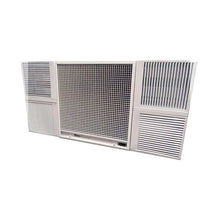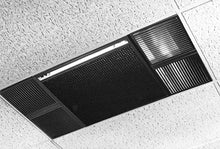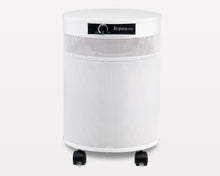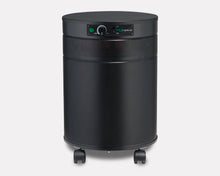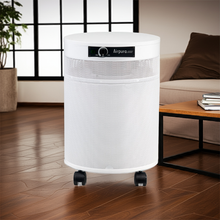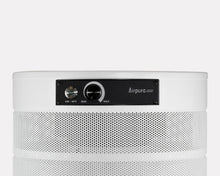Calculating the Right CFM for Whole-Home Air Purification in Allergy-Prone Households
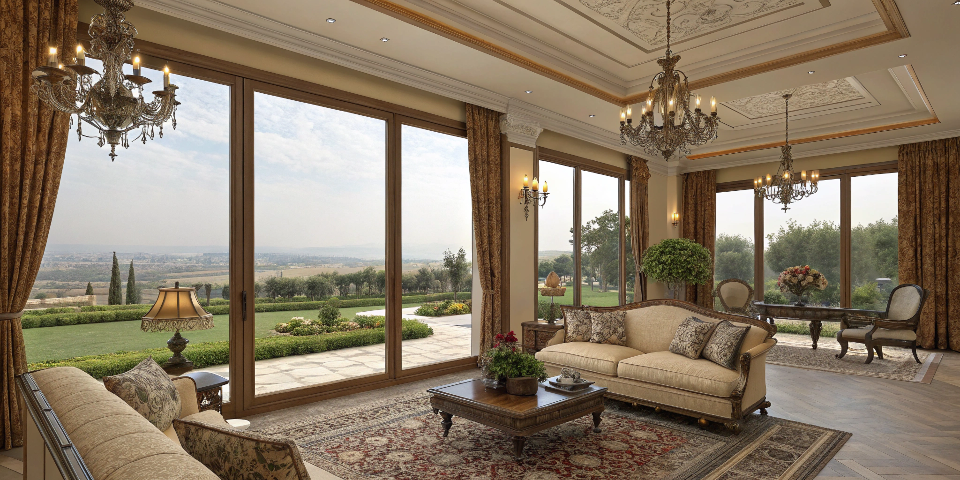
For anyone living with allergies or asthma, the air inside their home isn't just something to breathe; it's a critical factor in their daily comfort and well-being. While many homeowners might think of air purifiers as simple plug-and-play devices, achieving truly effective, whole-home air purification – especially for severe allergies – requires a deeper understanding of a crucial metric: CFM.
At Commercial Air Purifiers, LLC, we consistently guide our clients through the nuances of air purification sizing. We know that installing a "powerful air filter for an open concept" home or selecting the "best whole house air cleaner for asthma" isn't about guesswork; it's about precise calculation. Understanding Cubic Feet per Minute (CFM) is the cornerstone of this precision. This comprehensive guide will empower you to become your own "CFM calculator for whole home air purifier" needs, ensuring your investment truly delivers the clean air you and your family deserve.
The Invisible Threat: Why Airflow Matters for Allergy Sufferers
The battle against indoor allergens – pollen, pet dander, dust mites, mold spores, and even microscopic pollutants like VOCs and ultrafine particles – is relentless. These invisible invaders constantly circulate, triggering symptoms that range from mild discomfort to severe respiratory distress. While cleaning surfaces is important, a significant portion of these irritants remains suspended in the air.
This is where air purification comes in. An air purifier works by drawing in contaminated air, passing it through filtration media, and then releasing cleaned air back into the space. The efficiency of this process hinges on how much air the purifier can move and clean within a given timeframe. This rate of air movement is precisely what CFM measures.
What is CFM?
CFM stands for Cubic Feet per Minute. In the context of air purification, it quantifies the volume of air, in cubic feet, that an air purifier can process in one minute. A higher CFM rating indicates that a unit can move and filter more air, making it suitable for larger spaces or environments with higher contaminant loads. It's the engine behind the purification process.
Why is CFM critical for allergy-prone households?
For individuals with severe allergies or asthma, simply having some filtration isn't enough. They need a system capable of achieving a high number of Air Changes Per Hour (ACH). ACH refers to how many times the entire volume of air in a space is replaced or filtered within one hour. For allergy and asthma sufferers, insufficient ACH means allergens linger in the air, leading to ongoing symptoms despite having an air purifier running. The goal is to rapidly and continuously remove these triggers from the breathing zone.
Standard residential HVAC filters (typically MERV 8-11) are primarily designed to protect the HVAC equipment, not necessarily to provide optimal air quality for sensitive individuals. While they capture larger particles, they often miss the microscopic allergens that are most problematic. This is why a dedicated "whole house induct air purifier allergy" system, carefully sized by CFM, becomes essential.
Becoming Your Own CFM Calculator: The Essential Formula
To accurately size your whole-home air purification system, you need to calculate the total cubic footage of your home and determine your target ACH.
Step 1: Calculate Your Home's Total Volume (Cubic Feet)
This is simpler than it sounds. You'll need the total square footage of your home and the average ceiling height.
-
Total Square Footage: This can usually be found on your home's blueprints, a recent appraisal, or by measuring each room (length x width) and adding them together. For multi-story homes, sum the square footage of all heated/cooled floors.
-
Average Ceiling Height: Most homes have 8-foot ceilings, but some may have 9-foot or even vaulted ceilings. Use the average height across your main living areas.
Formula:
Example:
Let's say you have a 2,500 sq. ft. home with an average ceiling height of 8 feet.
Step 2: Determine Your Target Air Changes Per Hour (ACH)
This is where the needs of allergy-prone households significantly differ from general air purification.
-
General Recommendation: For basic air quality improvement, many sources suggest 2-3 ACH.
-
For Allergies and Asthma: To effectively manage allergens and minimize triggers, higher ACH rates are crucial. Organizations like the CDC and allergist groups often recommend a minimum of 4-5 ACH for spaces where individuals with sensitivities spend significant time. Some even advocate for 6 ACH or higher for severe cases or during peak allergy seasons. The higher the ACH, the more frequently the air is filtered, leading to a faster reduction in airborne pollutants. For example, the CDC's guidance on ventilation for healthy indoor environments suggests aiming for 5 ACH where possible, acknowledging that higher ACH levels can further reduce airborne contaminants.
At Commercial Air Purifiers, LLC, based on our experience with clients suffering from severe allergies, we recommend aiming for a minimum of 4-5 ACH for primary living spaces and potentially 5-6+ ACH for bedrooms or areas where sensitivities are most pronounced. While a higher ACH often means a more powerful unit and potentially higher operating costs, the benefits for respiratory health are often invaluable.
Step 3: Calculate the Required CFM
Now, with your total volume and desired ACH, you can calculate the required CFM for your whole-home air purification system.
Formula:
Example (continuing from above):
Total Volume = 20,000 cubic feet
Desired ACH = 5 (for an allergy-prone household)
This means that for a 2,500 sq. ft. home with 8-foot ceilings, aiming for 5 ACH, you would need a "whole house induct air purifier allergy" system (or a combination of systems) capable of delivering approximately 1,667 CFM.
Beyond the Calculation: Factors Influencing CFM Needs
While the CFM calculation provides a solid baseline, several other factors can influence the "air purifier sizing for large house allergies" and necessitate a more "powerful air filter for open concept" designs.
-
Severity of Allergies/Asthma: For individuals with extremely severe reactions or multiple triggers, pushing for a higher ACH (e.g., 6 ACH) might be beneficial, demanding a higher CFM unit.
-
Pet Ownership: Homes with pets, especially those with furry animals, generate significantly more dander and odors, which are potent allergens. This increased pollutant load warrants a higher CFM to effectively manage the constant influx of dander.
-
Smoking in the Home: Any form of smoking (tobacco, vaping, cannabis) generates a vast array of ultrafine particles and VOCs. This requires a much more robust filtration system with high CFM and substantial activated carbon.
-
Open Concept Layouts: As we touched upon earlier, "powerful air filter for open concept" homes are essential. While portable units struggle with air migration, a whole-house system with sufficient CFM can ensure uniform purification across large, interconnected spaces. Without proper sizing, "dead zones" of unfiltered air can persist.
-
Proximity to Pollution Sources: If your home is near busy roads (vehicle exhaust), industrial areas, or experiences frequent wildfire smoke, your indoor air quality will be more compromised, requiring a higher CFM to combat external pollutants that infiltrate your home.
-
Home's Air Tightness/Ventilation: Older, draftier homes might have more natural ventilation but can also let in more outdoor pollutants. Newer, tightly sealed homes retain pollutants more effectively, increasing the need for robust mechanical filtration.
-
Filter Type and Efficiency: While CFM indicates airflow, the type of filter determines what is removed. For allergies, a True HEPA filter (capturing 99.97% of particles 0.3 microns and larger) is non-negotiable. Many commercial-grade units also include substantial activated carbon for gases and odors. The density of these high-efficiency filters can sometimes create more resistance, meaning the fan needs to be more powerful to achieve the stated CFM. This is why a quality "HVAC air purifier commercial grade" unit is designed to handle this resistance.
How Commercial Air Purifiers, LLC Ensures Proper Sizing
At Commercial Air Purifiers, LLC, we don't just sell products; we provide tailored air quality solutions. Our process for "air purifier sizing for large house allergies" goes beyond a simple CFM calculation:
-
Detailed Home Assessment: We begin by understanding your specific needs, including the severity of allergies/asthma, presence of pets, lifestyle factors (e.g., smoking, cooking habits), and external environmental concerns. We also perform a thorough analysis of your home's layout, existing HVAC system, and ductwork.
-
Advanced Air Quality Testing: For comprehensive understanding, we can conduct real-time air quality monitoring to identify specific airborne pollutants, their concentrations, and peak times. This data provides invaluable insights that inform our recommendations.
-
Tailored System Design: Based on the CFM calculation and other influencing factors, we recommend the most appropriate "whole house induct air purifier allergy" system. This might be a powerful bypass HEPA system designed to integrate seamlessly with your HVAC, ensuring optimal airflow without compromising your existing system's efficiency.
-
Professional Installation: Proper installation is as crucial as correct sizing. Our certified technicians ensure the system is integrated correctly, minimizing pressure drop and maximizing purification efficiency. We ensure your "bypass HEPA filter home" system or full-bypass unit operates effectively from day one.
-
Ongoing Support and Maintenance: We provide clear guidance on filter replacement schedules and offer maintenance services to ensure your system continues to perform at its peak, delivering consistent clean air for years to come.
Our experience shows that a correctly sized system, particularly a "powerful air filter for an open concept" home, can dramatically reduce airborne allergen levels, leading to fewer symptoms, better sleep, and an improved quality of life for allergy sufferers. Clients consistently report a noticeable difference in air freshness and a significant reduction in dust buildup.
Conclusion: Breathe Easy with Confidence
Calculating the right CFM for your whole-home air purification system is not just a technical exercise; it's a fundamental step towards reclaiming control over your indoor environment and significantly improving the health and comfort of your allergy-prone household. While portable units offer some relief, only a precisely sized "HVAC air purifier commercial grade" system, integrated into your entire home's airflow, can provide the consistent, comprehensive air changes needed to truly combat severe allergies and asthma.
At Commercial Air Purifiers, LLC, our mission is to deliver unparalleled indoor air quality. By understanding the science behind CFM and ACH, and by partnering with experienced professionals, you can confidently select an air purification solution that transforms your home into the allergen-free sanctuary it was meant to be. Don't settle for "good enough" when it comes to the air you breathe. Equip your home with the right power, and breathe easier with confidence, knowing you've made the ultimate upgrade for your family's health.
Frequently Asked Questions
Q1: What is CADR, and how does it relate to CFM?
A1: CADR stands for Clean Air Delivery Rate. While CFM measures the volume of air an air purifier moves, CADR specifically measures how quickly the purifier delivers clean air, taking into account both airflow (CFM) and filter efficiency. It's often broken down for different pollutants like smoke, dust, and pollen. For whole-home systems, CFM and ACH are typically the primary sizing metrics, as CADR is more commonly associated with portable room air purifiers and their performance in a single space.
Q2: Can I just install a high-MERV filter in my existing HVAC system instead of a whole-home air purifier?
A2: While a higher MERV (Minimum Efficiency Reporting Value) filter (e.g., MERV 13-16) will capture more particles than a standard filter, it is not equivalent to a True HEPA filtration system. High-MERV filters can also significantly restrict airflow in your HVAC system, potentially straining your blower motor and reducing efficiency if your system isn't designed for it. A dedicated "whole house induct air purifier allergy" system or a "bypass HEPA filter home" unit is engineered to provide True HEPA filtration and often activated carbon without negatively impacting your HVAC's performance, providing a much higher level of air purification for severe allergies.
Q3: How often do I need to run my whole-home air purifier to achieve the desired ACH?
A3: For allergy and asthma sufferers, it's generally recommended to run your whole-home air purifier continuously, especially if it's integrated with your HVAC system. The more often your HVAC fan circulates air through the purification unit, the more consistently the ACH target will be met and maintained. Many systems have automatic settings or low, quiet modes that allow for continuous operation without significant disruption or excessive energy use.
Q4: Will proper CFM calculation eliminate all my allergy symptoms?
A4: A correctly sized air purification system, based on proper CFM calculation for your home's volume and desired ACH, will dramatically reduce airborne allergens and irritants. This can lead to a significant reduction in allergy and asthma symptoms. However, air purification is one component of a comprehensive allergen avoidance strategy. It should be combined with other practices like regular cleaning, humidity control, and consulting with an allergist for medical management.
About the Author: Commercial Air Purifiers, LLC is a leading provider of high-quality air purification solutions for commercial, industrial, and specialized residential environments. With years of experience and a deep understanding of airborne contaminants, we are dedicated to helping businesses and individuals achieve optimal indoor air quality. Our commitment to research-backed solutions and customer well-being drives our mission to bring the best air purifiers to the market.
Publication Date: July 16, 2025
References:
-
Environmental Protection Agency (EPA). (n.d.). Indoor Air Quality (IAQ). Retrieved from https://www.epa.gov/indoor-air-quality-iaq
-
Centers for Disease Control and Prevention (CDC). (2024, October 3). How Much Ventilation Is Enough? Retrieved from https://www.cdc.gov/niosh/ventilation/prevention/Aim-for-5.html
-
Asthma and Allergy Foundation of America (AAFA). (n.d.). Indoor Air Quality. Retrieved from https://aafa.org/asthma/asthma-triggers-causes/air-pollution-smog-asthma/indoor-air-quality/
-
Mission: Allergy. (n.d.). How to Choose an Air Cleaner (Air Purifier) for Allergies. Retrieved from https://www.missionallergy.com/faqs-choose-air-cleaner
-
Achoo Allergy. (n.d.). Air Exchanges Per Hour & Air Purifier Marketing Ploys. Retrieved from https://www.achooallergy.com/blog/learning/air-exchanges-per-hour-recognizing-air-purifier-marketing-ploys/

